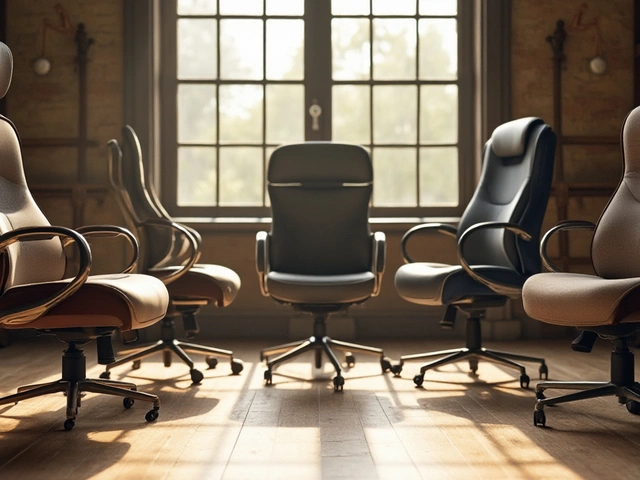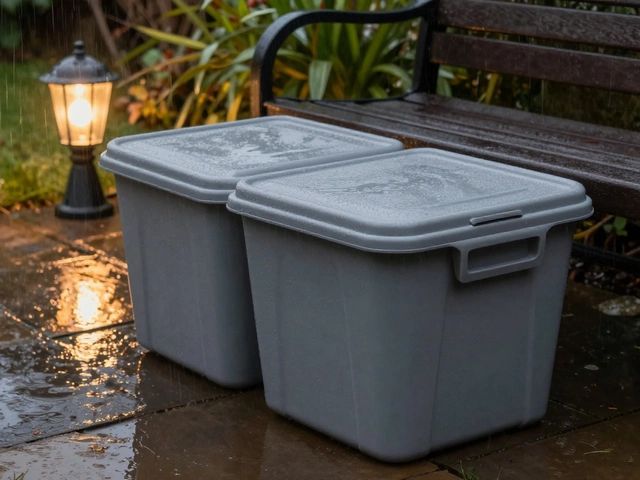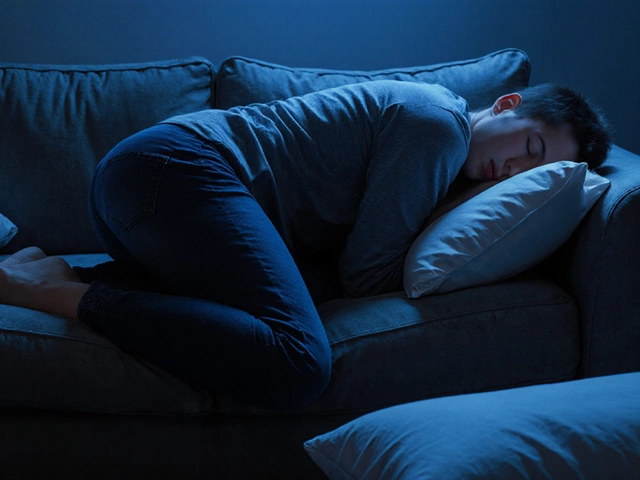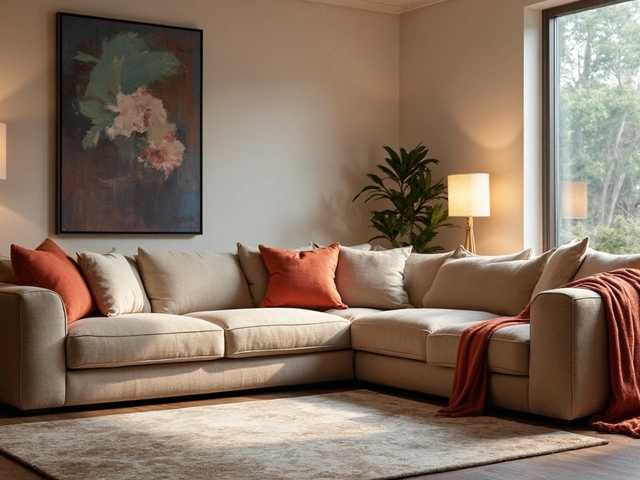Safe Recliner Position Calculator
How Long Can You Recline Safely?
Select your recliner angle and find the maximum recommended duration based on circulation safety guidelines.
Results
Ever wonder if that comfy recliner you love might be messing with the blood flow in your legs? You’re not alone. Many people assume a relaxed seat can’t cause any harm, yet the way a recliner positions your thighs and calves can create pressure points that slow down venous return. This guide breaks down the science, points out the red flags, and shows you how to enjoy a recliner without sacrificing leg health.
Key Takeaways
- Prolonged reclining can compress veins, reducing recliner circulation and increasing swelling.
- Choosing a recliner with adjustable footrests and tilt angles helps keep blood moving.
- Take breaks every 30‑45 minutes, stretch, and move your feet to boost the muscle pump.
- People with a history of deep vein thrombosis (DVT) or chronic edema should be extra cautious.
- When symptoms like tingling, heavy legs, or discoloration appear, consult a healthcare professional.
What a Recliner Chair Actually Is
Recliner chair is a type of upholstered seating that pivots backward, often with an extendable footrest, allowing the user to lie back at various angles. Originally designed for comfort in living rooms and offices, modern recliners come with electric motors, lumbar support, and memory‑foam cushions.
How Leg Circulation Works
Blood travels from the heart down the arteries, reaches the muscles, and returns via the veins. In the lower legs, the muscle pump-the rhythmic contraction of calf muscles-pushes blood upward against gravity. Veins have one‑way valves that prevent backflow. When those valves or the muscle pump don’t work properly, blood can pool, leading to peripheral edema or, in severe cases, deep vein thrombosis (DVT).
Why a Recliner Can Impede Blood Flow
When you lean back, several things happen:
- Knee flexion increases. The angle between thigh and calf narrows, squeezing the popliteal vein behind the knee.
- Footrest elevation. Raising the feet above heart level can reverse the natural pressure gradient, making it harder for veins to push blood upward.
- Static posture. Staying still for long stretches disables the muscle pump, so venous return slows dramatically.
These factors combine to create a bottleneck in the circulatory system, especially for people who already have compromised venous return due to age, obesity, or previous clotting events.
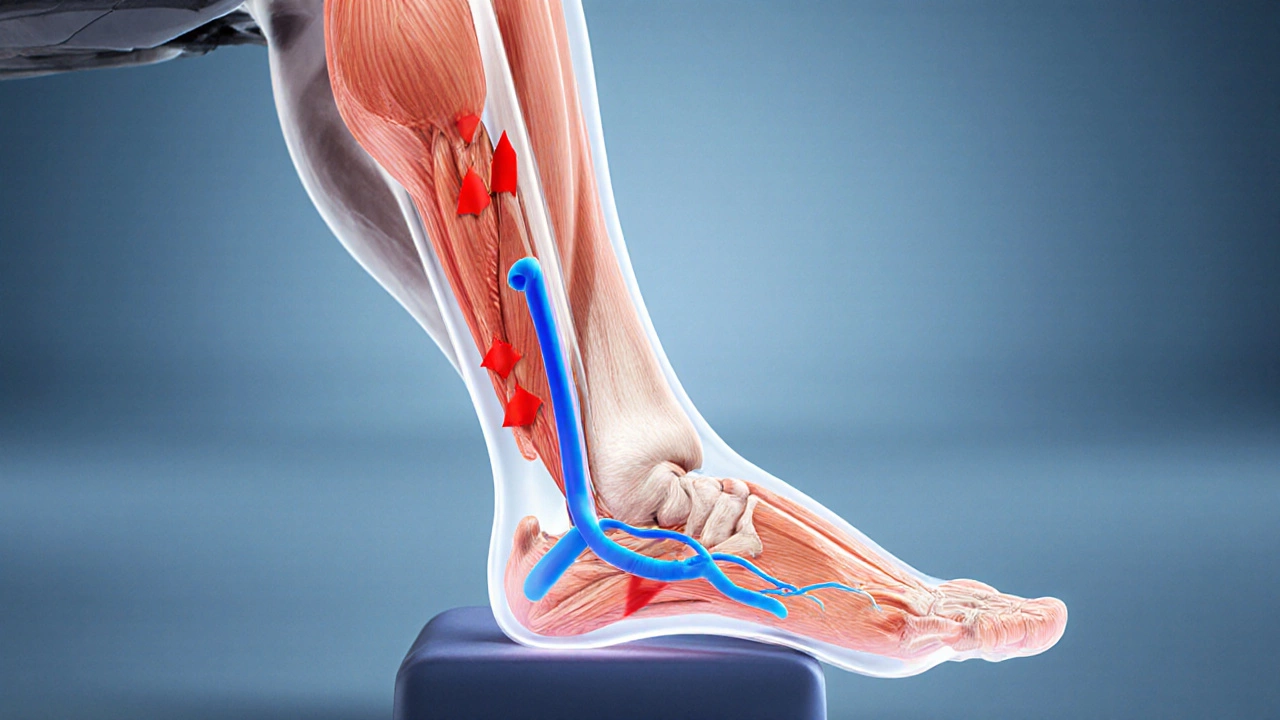
Common Circulatory Problems Linked to Reclining
- Swelling (edema): Fluid accumulates in the ankles and calves, often noticeable as a puffier silhouette by the end of the day.
- Tingling or numbness: Nerves can be compressed alongside veins, causing a pins‑and‑needles sensation.
- Discoloration: A bluish or reddish tint may appear, indicating stagnant blood.
- Increased DVT risk: While rare in healthy adults, prolonged immobilization-like watching a movie in a recliner for hours-can trigger clot formation in susceptible individuals.
Design Features That Influence Circulation
Not all recliners are created equal. Here’s what to look for:
- Adjustable footrest height: Ability to keep feet at or just below heart level.
- Angle lock positions: Multiple reclining angles let you find a posture that keeps the knee angle above 90°.
- Lumbar and thigh support cushions: Proper support reduces pressure on the back of the knee.
- Breathable upholstery: Fabric that doesn’t trap heat encourages movement.
- Built‑in massage or vibration: Stimulates the muscle pump and improves blood flow.
Comparing Popular Recliner Positions
| Position | Knee Angle | Pressure Level | Recommended Max Duration |
|---|---|---|---|
| Upright (0°) | ≈ 180° | Low | Unlimited |
| Slight recline (30°) | ≈ 150° | Moderate | 90 minutes |
| Full recline (90°) + footrest up | ≈ 90° | High | 30-45 minutes |
| Zero‑gravity (incline ~120°) | ≈ 120° | Low‑Moderate | 60 minutes |
Notice that the classic “lay‑flat” setting (90° recline) puts the most strain on the popliteal vein. If you love that position, set a timer and get up to stretch.
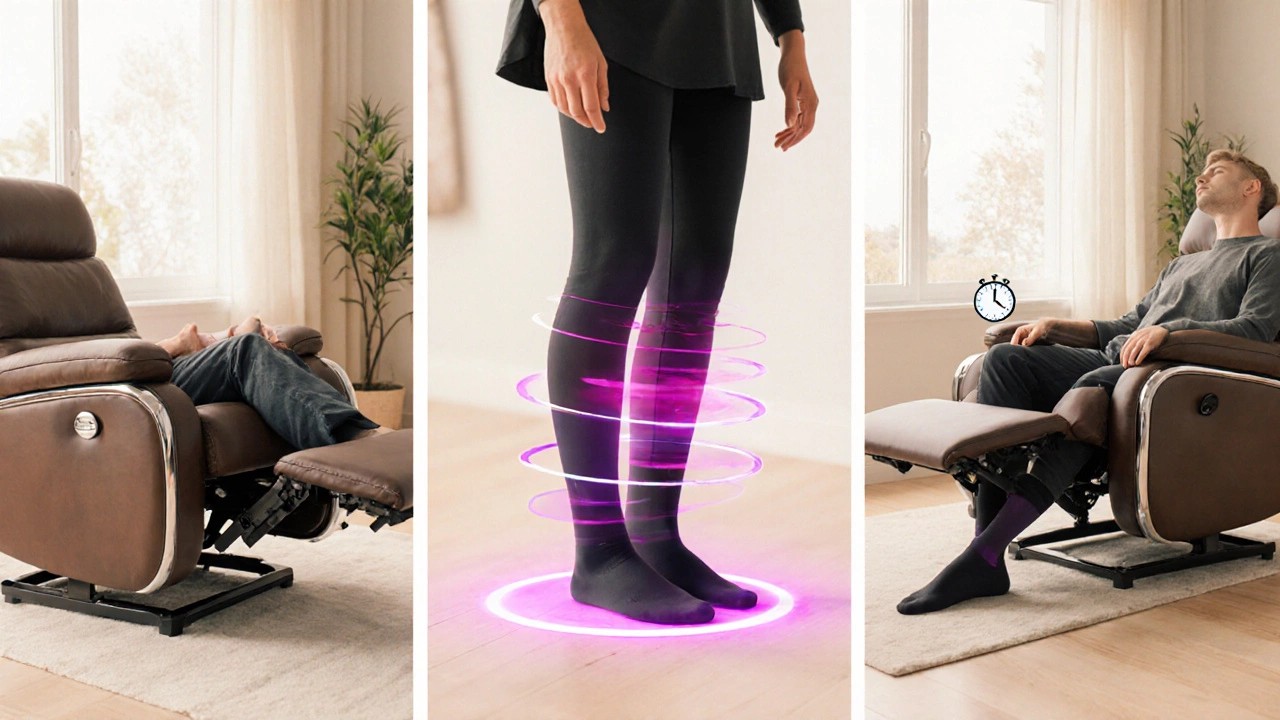
Practical Tips for Safe Reclining
- Adjust the footrest. Keep it level with or slightly below your heart. Many electric models let you lower it with a button.
- Change angles frequently. Switch between upright, slight recline, and zero‑gravity every 30 minutes.
- Move your feet. Simple ankle circles, calf raises, or a quick march in place reactivates the muscle pump.
- Use a pillow. Placing a small lumbar pillow can prevent the knees from collapsing inward.
- Stay hydrated. Proper fluid balance helps maintain blood volume and reduces clot risk.
- Wear compression socks. For those prone to swelling, graduated compression supports venous return.
When to Seek Professional Advice
If you notice any of the following after using a recliner, it’s time to call a doctor:
- Persistent swelling that doesn’t improve after standing.
- Sharp pain or cramping in the calf.
- Redness or warmth in one leg only.
- Sudden shortness of breath or chest discomfort (possible clot migration).
Early detection of DVT can be life‑saving. A quick Doppler ultrasound can confirm whether a clot is present.
Alternatives and Complementary Seating Options
If you’re hesitant about recliners, consider these alternatives that still offer comfort but with less leg compression:
- Zero‑gravity chairs. These tilt the body into a neutral, weight‑distributed pose.
- Adjustable office chairs with footrests. You can keep the footrest low and maintain a 90° knee angle.
- Sectional sofas with built‑in chaise. Allows you to stretch out without raising the feet too high.
- Massage recliners with leg‑stretch modes. Some models gently extend the legs, promoting circulation.
Bottom Line: Enjoy Your Recliner, but Stay Mobile
A recliner isn’t inherently dangerous, but staying in one position for too long can impair leg circulation. By picking a model with adjustable angles, taking regular movement breaks, and listening to your body, you can relax without compromising health.
Can sleeping in a recliner cause DVT?
Sleeping in a fully reclined position for many hours can increase DVT risk, especially if you have other risk factors like age, obesity, or a previous clot. Keep the footrest low, shift positions, and get up to walk whenever possible.
What recliner angle is safest for leg health?
A slight recline of 30° to a zero‑gravity tilt (around 120°) keeps the knee angle above 90°, reducing pressure on the popliteal vein. Avoid the flat‑back 90° position for long periods.
Do compression socks help when using a recliner?
Yes. Graduated compression socks apply gentle pressure that supports venous return, especially useful for people prone to swelling or who sit for extended sessions.
How often should I take breaks from a recliner?
Aim for a 5‑minute movement break every 30‑45 minutes. Stand, stretch your calves, and do ankle rotations to reactivate the muscle pump.
Are there recliners designed specifically for better circulation?
Some premium models include zero‑gravity positioning, built‑in massage, and adjustable foot platforms that keep feet at heart level. Look for features like "circulation‑enhancing" or "medical‑grade" recliners.

